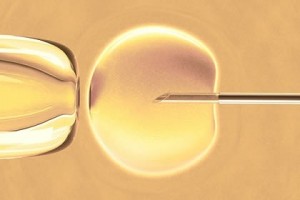Rejecting In Vitro Fertilization for All the Right Reasons
 Astounded, I had to take a seat when I read the latest from Rebecca Taylor. Taylor, a clinical laboratory technologist in molecular biology—and a Catholic—wrote about the horrendous results of man’s unbridled lust for controlling the human being and his ability to either live or die. Discussing Great Britain’s statistics, she reports,
Astounded, I had to take a seat when I read the latest from Rebecca Taylor. Taylor, a clinical laboratory technologist in molecular biology—and a Catholic—wrote about the horrendous results of man’s unbridled lust for controlling the human being and his ability to either live or die. Discussing Great Britain’s statistics, she reports,
The United Kingdom’s Human Fertilisation and Embryology Authority (HFEA) monitors the fertility industry there. At a request from Lord Alton on the numbers of embryos created with IVF in the UK, the HFEA reported that for every one live birth as many as 30 embryos are created. As reported by the Daily Mail:
The figures show that 3,144,386 embryos have been created in UK laboratories since the passage of the 1991 Human Fertilisation and Embryology Act. A total of 1,455,832 embryos were discarded in the course of treatment, 101,605 were given for research in destructive experiments, and 764,311 were frozen for later use.
While Taylor does not provide equivalent numbers for the United States, it is likely that America’s tabulated deaths from such practices would be far higher. The truth of the matter is that, at a very fundamental level, we Americans do not like to think about IVF and its progeny as being unethical, evil, or otherwise unacceptable. We like being in charge and doing things our way. But perhaps it is time to do a reality check on this perspective.
If Taylor’s numbers are troublesome to you, it is our hope that you will contemplate the possibility that American Life League’s focus, which requires spending time reminding pro-life and pro-death folks alike that there is nothing sound or good about in vitro fertilization, is sound and healthy. The facts scream at us if only we pay attention.
One of those sad facts is that couples do confront infertility on a daily basis and this is a tragedy. These are the couples who yearn for children of their own and discover they cannot have them in the natural way. The bright light is that there are moral and ethical ways available to such couples. Such practices do not require submitting one’s eggs and sperm to a techno-lab where the result is perhaps a baby now and then, but dead babies in abundance.
As Doctor Thomas Hilgers said in an interview, “Methods are now available that are very effective, medically authentic, and completely consistent with the teachings of the Church.” Hilgers continued, “Most medical approaches today bypass the woman’s problem or simply override her natural processes altogether. With NaPro, we find out why the body isn’t functioning correctly, then apply treatments that work cooperatively with the body.”
And to my mind that is they key to the problem of infertility. Hilgers’ method called NaProTechnology—and his perspective as a holistic physician who truly cares about infertility—make eminent sense. According to Catholic World Report,
Dr. Hilgers’ vision is for what he calls a “Mayo Clinic of Catholic reproductive health care” that would include doubling the size of the Pope Paul VI Institute and the construction of a retreat and conference center.
“That might sound like some pie-in-the-sky dream to a lot of people,” says Dr. Hilgers. “But I’ve been told that before many, many times, and we’re still here. Frankly, I have a lot of confidence in the future because I know that what I’m doing and what the hundreds and hundreds of people who make all this happen are doing is rooted in the wisdom of the Catholic Church and in the Author of Life.”
Think about his statements for a millisecond and then ask yourself this question. What is the most logical way to deal with the human pain caused by infertility—inflicting death on millions of embryonic children or visiting a center where the actual root cause of infertility is studied and treated so that the couple can bear children according to nature’s way?
It’s really a life or death choice.

